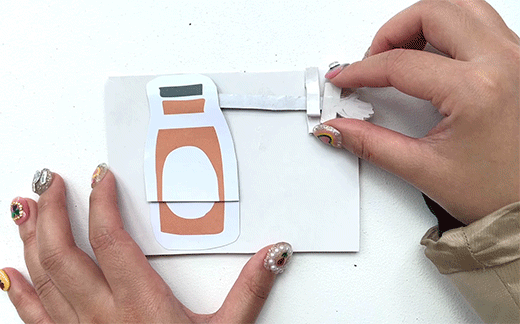Ways of learning are essential for understanding a child's needs, as well as how he or she grasps visual, textual, and contextual information. What are the bodily movements and expressions? What piques their curiosity. To learn more about the relationship between a teacher and a student, I contacted one of my dear friend Nikisha Kotwal, who is the communication coordinator at, The Gateway School of Mumbai, which is a not-for-profit organisation dedicated to empowering children with disabilities.
Through the lens of Educator
Our discussion centred on the relationship between the teacher and the child in order to learn through cognitive developmental skills.
Background research on the institute was the best way for me to proceed with insights from people involved with special needs learnings. Gateway was founded by a parent of a special-needs child. There is a strong belief among parents and professionals that collaboration is the key to success when working with students with disabilities. They refer to themselves as a laboratory school.
In our online meetings, we discussed how their curriculum works and what methods teachers use during our conversation. Because Nikisha comes from a product design background, she shared her valuable insights on creating an experience for everyone, through Universal Design Learning, we had a conversation about the inclusiveness of experience.
Universal design for learning is based on the original Universal Design principle used in architecture. Rather than adding a ramp after the fact to accommodate a disabled individual, Universal Design advocates for access for all to be considered during the planning stages, rather than as an afterthought. This afterthought is commonly known as retrofitting. Rather than relying on retrofitting, this approach allows everyone to enter the building through the same door but with multiple points of entry. This concept is now being applied to education via universal design for learning. (Universal design for learning for autistic students, 2021)
It is critical to shine a spotlight on a student's strengths in order to maximise his or her ability to learn and this declaration began to influence me with building a meaningful experience in which individuals can be engaged and feel valued.
A short 10-day Intern Program
Furthermore, we planned to start a short 10-day intern program with gateways to experience naturalistic observation and shadowing in a live online classroom session.
The goal was to simply observe, without interacting' children's natural activities on a daily basis.
I was shadowing three subjective sessions, one was about science experiments, another one was with social studies and learning through narratives. We've all known that children enjoy playing since we were children.
The most interesting aspects of my observations were
They are ecstatic to tell them about their newfound knowledge. Making or creating things is more interesting to them than watching a presentation.
Teachers play an important role in narrating what they say. Students enjoy reading aloud in the same way that teachers narrate, which transports them to a world of imagination. Visuals, audio, and experimentation with material resources keep them enthralled.
Adapting learning through activities is important for developing motor skills, feeling joyful, and being involved.
Key finding: Push their limits by leveraging their strengths; pre-planning makes a plan effortless and manageable.
On the other hand, I began developing concept on how material can play a role. To begin, I gathered some sensorial materials and attempted to create small objects that would pique the interest of children.
Inspired by a experience in science museum named pattern pod for children aged 2 - 5 years.
To get our team involved and experiment with our imaginations, we created a few more tangible cards based on the exhibit on the ground floor of Science Museum.
Feedbacks and Learnings
The agenda of the meeting with mentors was to show the progress in our timeline; they were positive about how we are moving forward with this project with a clarity of where it is located and methods of reaching out to our audience. Our concern was how you planned to include autistic children in your process. To move forward, I realised that long-term goals must be put in place.
References
Medium. 2021. Universal design for learning for students with Autism. [online] Available at: <https://uxdesign.cc/universal-design-for-learning-for-students-with-autism-a7d12c0d35f7>
https://www.gatewayschoolmumbai.org/
https://www.understood.org/
https://www.edutopia.org/article/what-autism-can-look-like-elizabeth-barnes







